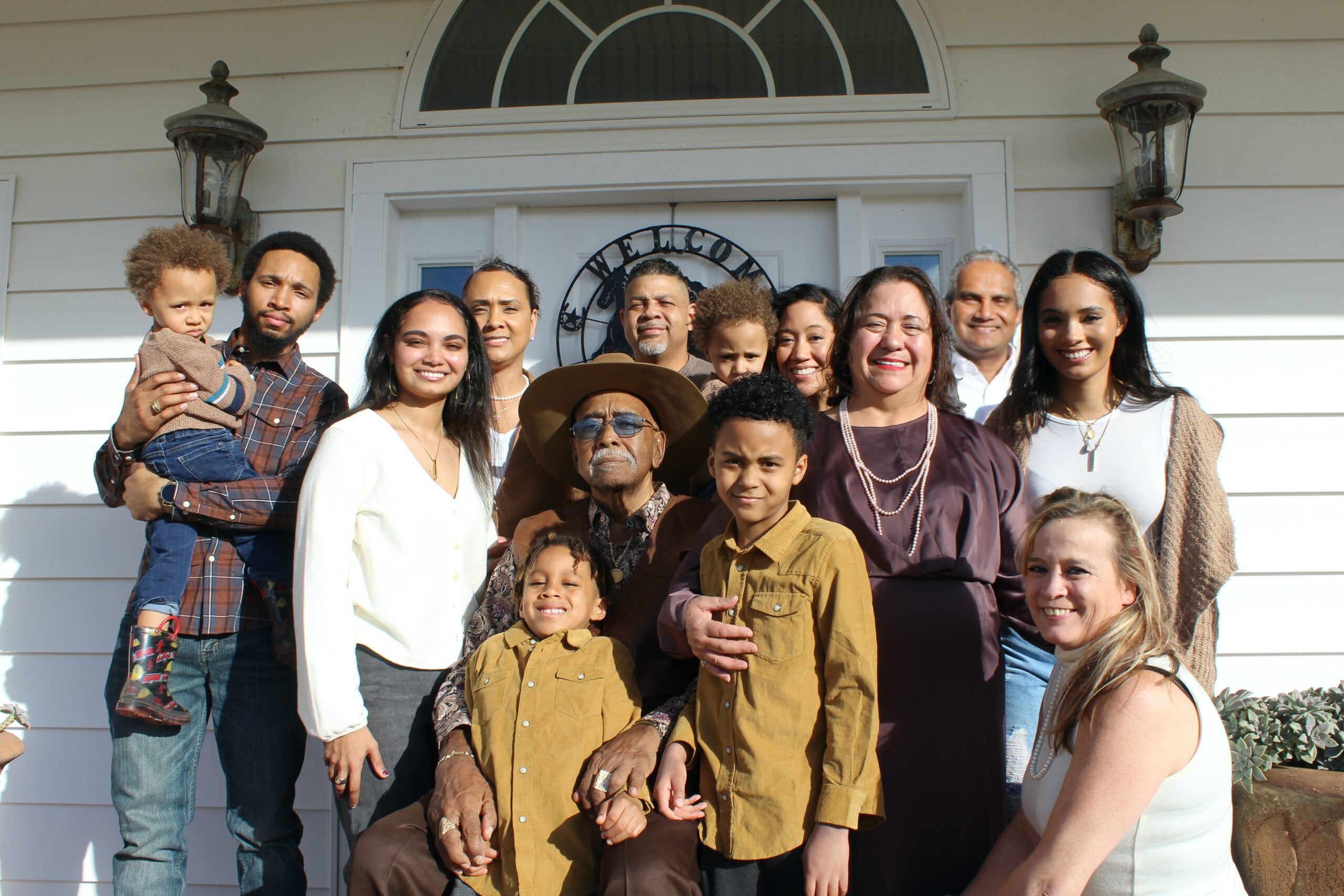-
Place of Birth
North Carolina
-
Tribal Affiliation
Yamassee/Creek
-
Surname Heritage
Germany / Scotland / Ireland / England
Gibson History, Family Crest & Coats of Arms

The Hebrides islands and the west coast of Scotland are the ancestral home of the Gibson family. Their name comes from the given name Gibb, which is a diminutive form of the name Gilbert. [1]
Early Origins of the Gibson family
The surname Gibson was first found in Galloway (Gaelic: Gall-ghaidhealaibh), an area of southwestern Scotland, now part of the Council Area of Dumfries and Galloway, that formerly consisted of the counties of Wigtown (West Galloway) and Kirkcudbright (East Galloway), where they held a family seat from very early times.
Descended from a chieftain, Gilbert, probably Gilbert, Lord of Galloway, the Gibsons settled first at Lennox in Scotland, and in those early times was a formidable force to be encountered. The first official mention was when John Gibson surrendered the Castle of Rothesay in 1335. A few years later, Thomas Gibbeson was charged with breaking parole in 1358; and John Gybbessone was listed as a servitor of William Douglas when he was held hostage by Henry Vi in 1425.[1]
Later a branch of the family were well established in the sea-port and ancient burgh of barony of Levin in Fifeshire. “This place, which is agreeably situated on the sea-shore at the mouth of the river whence it takes its name, was erected into a burgh of barony by charter of the proprietor of the lands of Durie, now belonging to the Christies, but once in the possession of the family of Gibson, whose descendants, the lords Durie, are distinguished in Scottish history.” [2]
Early History of the Gibson family
This web page shows only a small excerpt of our Gibson research.
Gibson Spelling Variations
Medieval translation of Gaelic names could not be referred to as an accurate process. Spelling was not yet standardized, and names in documents from that era are riddled with spelling variations. Gibson has been written as Gibson, Gibsone, Gibsons, Gipson, Gibsoun, Gipsone, Gibbson, Gibbsone, Gippson and many more.
Early Notables of the Gibson family (pre 1700)
Notable amongst the Clan from early times was Richard Gibson (1615-1690), known as “Dwarf Gibson”, a painter of portrait miniatures and a court dwarf in England during the reigns of Charles I, Oliver Cromwell, Charles II and William and Mary; Sir John Gibson, of Alderstone, in Ratho parish, near Edinburgh; and his son, Sir John Gibson (ca. 1637-1717), founder of the Gloucestershire Regiment and Member of Parliament for Portsmouth, 1696-1698 and 1702. Thomas Gibson (d. 1562), was an English printer, medical practitioner, and theological writer and a native of Morpeth, Northumberland. Sir Alexander Gibson , Lord Durie (d. 1644), was a Scottish judge.
Gibson World Ranking
In the United States, the name Gibson is the 116th most popular surname with an estimated 186,525 people with that name. [3] However, in Canada, the name Gibson is ranked the 171stmost popular surname with an estimated 20,710 people with that name. [4] And in Australia, the name Gibson is the 114th popular surname with an estimated 23,680 people with that name. [5] New Zealand ranks Gibson as 75th with 4,661 people. [6] The United Kingdom ranks Gibson as 83rd with 53,649 people. [7]
 Migration of the Gibson family to Ireland
Migration of the Gibson family to Ireland
Some of the Gibson family moved to Ireland, but this topic is not covered in this excerpt.
Gibson migration to the United States +
Ancestors of many of the Dalriadan families who crossed the Atlantic still live along the east coast of the United States and Canada. Some Scottish settlers arrived in Canada during the American War of Independence as United Empire Loyalists, while others stayed south to fight for a new nation. The descendants of Scottish settlers in both countries began to rediscover their heritage in the 19th and 20th centuries through Clan societies and highland games. An inquiry into the early roots of North American families has revealed a number of immigrants bearing the name Gibson or a variant listed above:
Gibson Settlers in United States in the 17th Century
- Frances Gibson, who landed in Jamestown, Va in 1624 [8]
- Christopher Gibson, from Buckinghamshire, who sailed from Isle of Wright arriving in Salem, Massachusetts in 1630 aboard the ship “Ambrose” as part of the Winthrop Fleet, found in Dorchester [8]
- Mrs. Mary Gibson of Buckinghamshire who sailed from Isle of Wright arriving in Salem, Massachusetts in 1630 aboard the ship “Ambrose” as part of the Winthrop Fleet, found in Dorchester. [9]
- Miss Elizabeth Gibson of Cambrdige sailed who from Isle of Wright arriving in Salem, Massachusetts in 1630 aboard the ship “Ambrose” as part of the Winthrop Fleet [9]
- Mr. Nics Gibson, aged 22, who arrived in Virginia in 1835 aboard the ship “Assurance” [9]
Gibson Settlers in United States in the 18th Century
- Anne Gibson, who landed in Virginia in 1701 [8]
- Amy Gibson, who arrived in Virginia in 1705 [8]
- Eliza Gibson, who landed in Virginia in 1714 [8]
- Cha Gibson, who arrived in Virginia in 1718 [8]
- Abel Gibson, who arrived in Virginia in 1746
Gibson Settlers in United States in the 19th Century
- Edward Gibson, who arrived in America in 1804 [8]
- Fanny Gibson, aged 18, who arrived in New York, NY in 1804 [8]
- John Gibson, who arrived in Allegany (Allegheny) County, Pennsylvania in 1805 [8]
- Margaret Gibson, who arrived in New York, NY in 1816 [8]
- Alexander Gibson, who landed in Norfolk, Va in 1817 [8]
Some of the first settlers of this family name were:
Gibson Settlers in Canada in the 18th Century
- Jane Gibson, who landed in Pictou, Nova Scotia in 1773
- George Gibson, aged 36, who landed in Fort Cumberland, Nova Scotia in 1774
- Mr. William Gibson U.E. who settled in Charlotte County, New Brunswick c. 1783 [10]
- Mr. Gilbert Gibson U.E. who settled in Charlotte County, New Brunswick c. 1783 [10]
- Mrs. Hannah Gibson U.E. who settled in Charlotte County, New Brunswick c. 1783 [10]
Gibson Settlers in Canada in the 19th Century
- James Gibson, aged 40, a farmer, who arrived in Quebec aboard the ship “Atlas” in 1815
- Helen Gibson, aged 33, who arrived in Canada in 1815
- Ann Gibson, aged 12, who arrived in Quebec aboard the ship “Atlas” in 1815
- Jean Gibson, aged 7, who arrived in Quebec aboard the ship “Atlas” in 1815
- James Gibson, aged 6, who arrived in Quebec aboard the ship “Atlas” in 1815
Gibson Settlers in Canada in the 20th Century
- G H Gibson, who arrived in Saint John, New Brunswick in 1907
- Miss J Gibson, who arrived in Saint John, New Brunswick in 1907
Gibson migration to Australia+
Emigration to Australia followed the First Fleets of convicts, tradespeople and early settlers. Early immigrants include:
Gibson Settlers in Australia in the 19th Century
- Mr. David Gibson, (b. 1778), aged 25, British farmer who was convicted in York, Yorkshire, England for life for stealing, transported aboard the “Calcutta” in February 1803, arriving in New South Wales, Australia, he died in 1858 [11]
- Miss Mary Gibson, English convict who was convicted in Essex, England for 14 years, transported aboard the “Canada” in March 1810, arriving in New South Wales, Australia [12]
- Miss Elizabeth Gibson, English convict who was convicted in Derbyshire, England for 7 years, transported aboard the “Broxbournebury” in January 1814, arriving in New South Wales, Australia [13]
- Mr. Edward Gibson, English convict who was convicted in Cambridge, Cambridgeshire, England for 14 years for possessing forged bank notes, transported aboard the “Canada” on 23rd April 1819, arriving in New South Wales, Australia [12]
- Mr. George Gibson, British Convict who was convicted in Sussex, England for 14 years, transported aboard the “Earl St Vincent” on 6th April 1820, arriving in New South Wales, Australia [14]
Gibson migration to New Zealand +
Emigration to New Zealand followed in the footsteps of the European explorers, such as Captain Cook (1769-70): first came sealers, whalers, missionaries, and traders. By 1838, the British New Zealand Company had begun buying land from the Maori tribes, and selling it to settlers, and, after the Treaty of Waitangi in 1840, many British families set out on the arduous six month journey from Britain to Aotearoa to start a new life. Early immigrants include:
Gibson Settlers in New Zealand in the 19th Century
- Lewis Gibson, aged 24, a farm labourer, who arrived in Wellington, New Zealand aboard the ship “Catherine Stewart Forbes” in 1841
- Maria Gibson, who arrived in Port Nicholson aboard the ship “Mandarin” in 1841
- John Gibson, who landed in Nelson, New Zealand in 1842 aboard the ship Fifeshire
- L Gibson, who landed in Wellington, New Zealand in 1842
- Sandy Robert Gibson, aged 29, a farm labourer, who arrived in Nelson, New Zealand aboard the ship “Clifford” in 1842
Gibson migration to West Indies +
The British first settled the British West Indies around 1604. They made many attempts but failed in some to establish settlements on the Islands including Saint Lucia and Grenada. By 1627 they had managed to establish settlements on St. Kitts (St. Christopher) and Barbados, but by 1641 the Spanish had moved in and destroyed some of these including those at Providence Island. The British continued to expand the settlements including setting the First Federation in the British West Indies by 1674; some of the islands include Barbados, Bermuda, Cayman Island, Turks and Caicos, Jamaica and Belize then known as British Honduras. By the 1960’s many of the islands became independent after the West Indies Federation which existed from 1958 to 1962 failed due to internal political conflicts. After this a number of Eastern Caribbean islands formed a free association. [15]
Gibson Settlers in West Indies in the 17th Century
- Mr. William Gibson, (b. 1616), aged 18, British settler travelling from Gravesend, UK aboard the ship “Hopewell” arriving in Barbados on 17th February 1634 [8]
- Mr. Walter Gibson, (b. 1610), aged 25, British settler travelling from London, England aboard the ship “Peter Bonaventure” arriving in Barbados and St Christopher (Saint Kitts) in 1635 [16]
- Mr. Richard Gibson, (b. 1610), aged 25, British settler travelling aboard the ship “Expedition” arriving in Barbados in 1636 [17]
Contemporary Notables of the name Gibson (post 1700) +
- Benjamin F. Gibson (1931-2021), American jurist, Senior Judge of the United States District Court for the Western District of Michigan (1996-1999)
- Todd Gibson (1936-2020), American racing driver from Morral, Ohio and Richwood, Ohio
- Jon Gibson (1940-2020), American flautist, saxophonist, composer, and visual artist, known as one of the founding members of the Philip Glass Ensemble
- Robert “Bob” Gibson (1935-2020), American professional baseball pitcher who played 17 seasons in Major League Baseball (MLB) for the St. Louis Cardinals (1959–1975), awarded two Cy Young Awards and the 1968 National League (NL) Most Valuable Player (MVP) Award
- Levi Withee “L. W.” Gibson (1872-1919), American businessman and politician from La Crosse, Wisconsin who served in the Wisconsin State Assembly and was a Republican in 1919
- Charles E. Gibson Jr. (1925-2017), American lawyer and politician, Vermont Attorney General
- Harry C. Gibson, American Republican politician, Candidate in primary for Governor of Ohio, 1926 [18]
- Harry G. Gibson, American Republican politician, Candidate in primary for U.S. Representative from Michigan 13th District, 1934 [18]
- Harold C. Gibson, American Republican politician, Delegate to New Hampshire State Constitutional Convention from Concord 4th Ward, 1956; Member of New HampshireState House of Representatives from Concord 4th Ward; Elected 1956 [18]
- H. E. Gibson, American Democratic Party politician, Delegate to Democratic National Convention from Alabama, 1916 [18]
Historic Events for the Gibson family +
The motto was originally a war cry or slogan. Mottoes first began to be shown with arms in the 14th and 15th centuries, but were not in general use until the 17th century. Thus the oldest coats of arms generally do not include a motto. Mottoes seldom form part of the grant of arms: Under most heraldic authorities, a motto is an optional component of the coat of arms, and can be added to or changed at will; many families have chosen not to display a motto.
Motto: Recte et fideliter
Motto Translation: Just and faithful.


